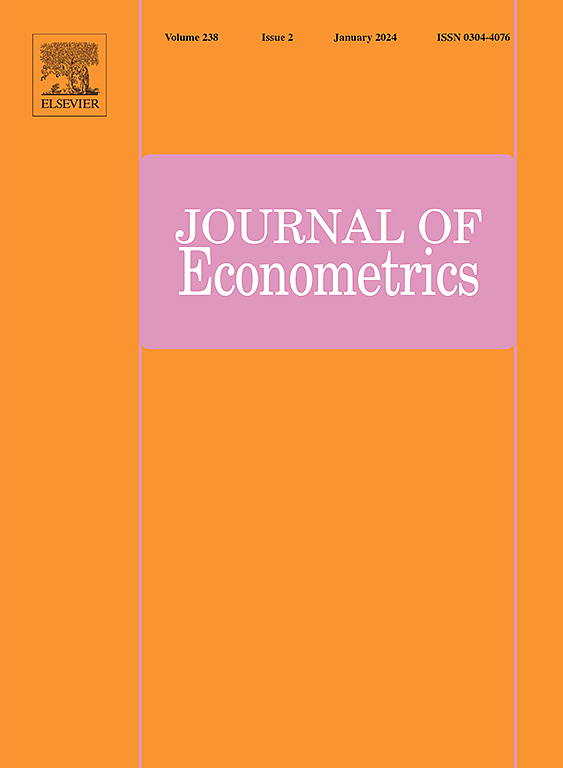高维设置中的分布式反事实分析
IF 4
3区 经济学
Q1 ECONOMICS
引用次数: 0
摘要
在治疗效果估计方面,本文提出了一种新的方法,用于在面板结构中观察到单一(或少数)治疗单位和可能的高维潜在控制时恢复反事实分布。该方法可容纳(但不要求)单位数大于时间段数(高维设置)。与只对条件平均值建模不同,我们建议在没有干预的情况下对整个条件量化函数(CQF)建模,并使用惩罚回归对干预前的时期进行估计。我们推导出了估计的 CQF 的非渐近限值,该限值在量值范围内均匀有效,使实践者能够重新构建整个合约分布。此外,我们还对估计的 CQF 的概率覆盖范围进行了约束,该范围可用于为干预后的每个时期或同时的治疗效果(可能是随机的)构建有效的置信区间。我们还根据估计的 CQF 与人群 CQF 的偏差 Lp 规范,提出了一种新的无效应尖锐零假设检验。有趣的是,空值分布是准中枢分布,即它只取决于估计的 CQF、Lp 准则和干预后的时间段数,而不取决于干预后时间段的大小。因此,临界值可以很容易地模拟出来。我们通过重温 Acemoglu 等人(2016 年)的实证研究来说明该方法。本文章由计算机程序翻译,如有差异,请以英文原文为准。
Distributional counterfactual analysis in high-dimensional setup
In the context of treatment effect estimation, this paper proposes a new methodology to recover the counterfactual distribution when there is a single (or a few) treated unit and possibly a high-dimensional number of potential controls observed in a panel structure. The methodology accommodates, albeit does not require, the number of units to be larger than the number of time periods (high-dimensional setup). As opposed to model only the conditional mean, we propose to model the entire conditional quantile function (CQF) in the absence of intervention and estimate it using the pre-intervention period using a penalized regression. We derive non-asymptotic bounds for the estimated CQF valid uniformly over the quantiles, allowing the practitioner to re-construct the entire contractual distribution. Moreover, we bound the probability coverage of this estimated CQF which can be used to construct valid confidence intervals for the (possibly random) treatment effect for every post-intervention period or simultaneously. We also propose a new hypothesis test for the sharp null of no-effect based on the norm of deviation of the estimated CQF to the population one. Interestingly, the null distribution is quasi-pivotal in the sense that it only depends on the estimated CQF, norm, and the number of post-intervention periods, but not on the size of the post-intervention period. For that reason, critical values can then be easily simulated. We illustrate the methodology is by revisiting the empirical study in Acemoglu et al. (2016).
求助全文
通过发布文献求助,成功后即可免费获取论文全文。
去求助
来源期刊

Journal of Econometrics
社会科学-数学跨学科应用
CiteScore
8.60
自引率
1.60%
发文量
220
审稿时长
3-8 weeks
期刊介绍:
The Journal of Econometrics serves as an outlet for important, high quality, new research in both theoretical and applied econometrics. The scope of the Journal includes papers dealing with identification, estimation, testing, decision, and prediction issues encountered in economic research. Classical Bayesian statistics, and machine learning methods, are decidedly within the range of the Journal''s interests. The Annals of Econometrics is a supplement to the Journal of Econometrics.
 求助内容:
求助内容: 应助结果提醒方式:
应助结果提醒方式:


